Best Time to Visit Peru
A Guide to Seasons, Festivals & Weather
Planning a trip to Peru? Choosing the right time to visit is crucial to making the most of your adventure. Whether you’re trekking to Machu Picchu, exploring the Amazon, or immersing yourself in cultural festivals, the best time to visit depends on weather, crowds, and the experiences you want.
Peru’s diverse geography means weather conditions vary across regions, and instead of four distinct seasons, Peru experiences a dry season and a wet season. Below, we break down the best times to visit based on weather, region, and special events so you can plan the perfect trip

Explore Vacation Options
Peru’s Climate & Regions
Understanding Peru’s Climate & Regions
Peru is located in the Southern Hemisphere, meaning its seasons are opposite to those in North America and Europe. However, due to its proximity to the equator, temperature fluctuations are minimal, and the main seasonal difference is between the wet season and the dry season
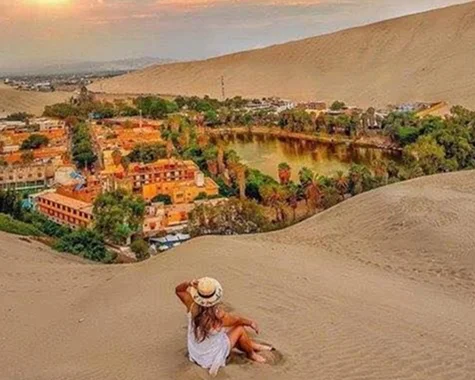
Coastal Region (Lima, Paracas, Arequipa, Trujillo)
- Best time to visit :
November – April (warmer, sunnier) - Foggy & cloudy :
May – October (especially in Lima) - The coast experiences little rain year-round.
- Cities like Lima often have heavy fog (garúa) between May and October, creating cooler and cloudier conditions.
- Further inland, cities like Arequipa enjoy pleasant weather year round with fewer cloudy days.
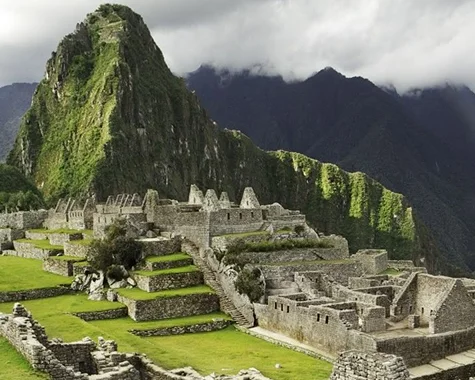
The Andes & Machu Picchu (Cusco, Sacred Valley, Huaraz)
- Best time to visit :
May – August (dry season, ideal for trekking) - Rainy season :
November – March (muddy trails, limited visibility) - This region has the most defined wet and dry seasons.
- Trekking & mountaineering are best in the dry season (May–August).
- During the wet season, trails can be slippery, and visibility may be poor, especially for visiting Machu Picchu.
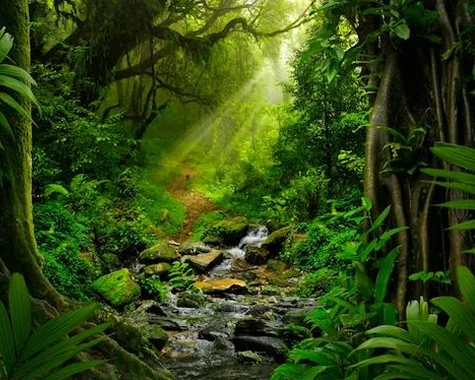
The Amazon Jungle (Iquitos, Puerto Maldonado, Manu National Park)
- Best time to visit :
June – September (less rain, better wildlife spotting) - Rainy season :
October – May (higher water levels, more mosquitoes) - The Amazon is never completely dry, but the dry season is slightly less rainy.
- Wildlife viewing is better in the dry season as animals congregate around rivers.
- Fewer mosquitoes make for a more comfortable jungle experience.
Peru’s Climate & Regions
Peru’s Festivals & Events Plan Around Cultural Celebrations!
Peru is a country rich in traditions, music, dance, and history, with colorful festivals celebrated year-round. Whether you’re looking to experience Incan heritage, vibrant street parades, religious processions, or Peru’s world-renowned cuisine, planning your visit around one of these cultural events can add an unforgettable experience to your trip.
Here are some of the most famous festivals in Peru that travelers won’t want to miss:
Carnival Celebration
Carnival (Late February / Early March)
Where : Cajamarca (main celebration), but also celebrated nationwide
Why Visit : One of the liveliest festivals in Peru!
Carnival is celebrated throughout Latin America, but Peru’s most famous Carnival takes place in Cajamarca, where the streets come alive with parades, water fights, music, and dancing.
What to Expect:
- Colorful parades with elaborate costumes and traditional masks
- Water balloon fights a fun but messy tradition, so be prepared!
- Live music and dance performances showcasing regional styles
- Street food vendors selling Peruvian treats and drinks
Expect large crowds and lots of water throwing if you don’t want to get wet, watch the parades from a distance!

Inti Raymi Festival
Inti Raymi (Festival of the Sun) – June 24
Where : Cusco
Why Visit :The largest and most important Incan festival in Peru!
Inti Raymi, or the Festival of the Sun, was the most sacred ceremony of the Inca Empire, honoring Inti, the Sun God. Today, it is Cusco’s biggest annual celebration, attracting thousands of visitors from around the world.
What to Expect:
- A spectacular reenactment of an ancient Incan ritual at the Sacsayhuamán archaeological site
- Traditional Andean music and dance performances
- Parades through Cusco’s historic streets, with locals in Incan-style costumes
- A deep connection to Peru’s pre-Columbian history and culture
Book hotels early! Inti Raymi is one of Cusco’s busiest travel periods, and accommodations fill up fast.
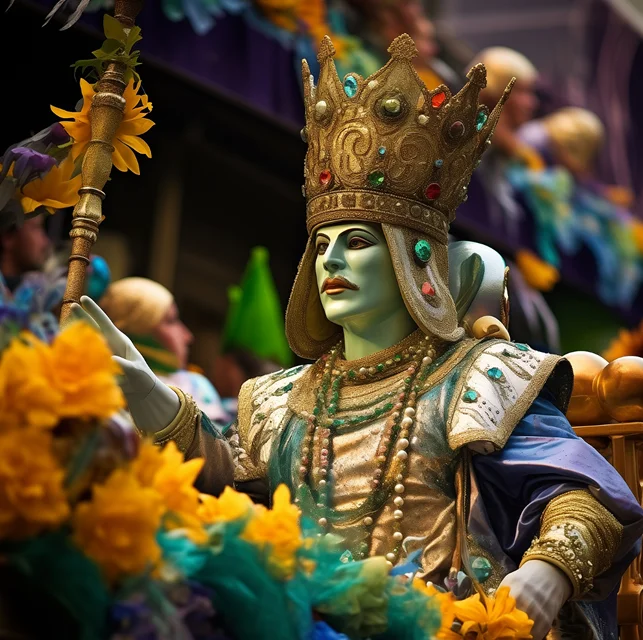
Mistura Festival
Mistura Culinary Festival – Early September
Why Visit : The largest food festival in Latin America!
Peru is a gastronomic paradise, and Mistura celebrates the country’s rich and diverse culinary traditions. Held in Lima, this festival brings together top Peruvian chefs, local food vendors, and international food lovers for a 10-day food extravaganza.
What to Expect:
- Food stalls featuring Peru’s signature dishes, including ceviche, anticuchos, and lomo saltado
- A Pisco bar serving Peru’s iconic national drink
- Cooking demonstrations and live chef presentations
- A market featuring fresh Andean ingredients and artisanal products
Try a “tasting passport” to sample a variety of dishes without waiting in long lines!
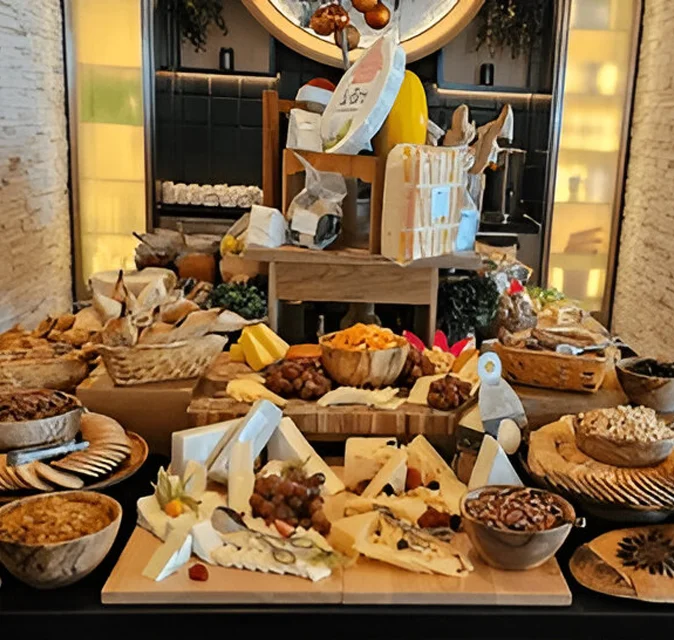
Puno Week
Puno Week – First Week of November
Where : Puno (Lake Titicaca region)
Why Visit :A week-long celebration of Incan history and folklore
Puno Week celebrates Manco Cápac, the legendary founder of the Inca Empire, who, according to legend, emerged from Lake Titicaca to establish Cusco. The festival features a mix of history, tradition, and vibrant Andean culture.
What to Expect:
- Folk dance competitions featuring over 200 traditional dances
- A dramatic reenactment of Manco Cápac’s rise from Lake Titicaca
- Boat processions on Lake Titicaca, with decorated reed boats
- Street markets, music, and plenty of local food
Puno sits at 3,800m (12,500 ft) above sea level, so acclimate to the altitude before joining the celebrations!
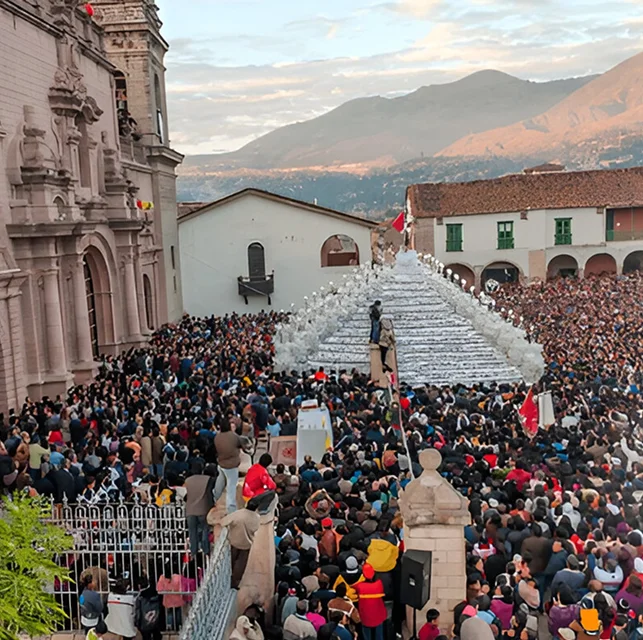
Top Festivals
More Must See Festivals in Peru
More Incredible Festivals in Peru You Won’t Want to Miss
Semana Santa (Holy Week) – March/April
A deeply religious Easter celebration with grand processions and candlelit vigils, especially in Cusco and Ayacucho.
Fiesta de la Virgen del Carmen – July 15-18
A lively festival in Paucartambo, near Cusco, with masked dancers, fireworks, and folkloric music honoring the Virgin of Carmen.
Qoyllur Rit’i (Snow Star Festival) – May/June
A fascinating blend of Incan and Catholic traditions, where thousands of pilgrims trek to the Andean glaciers to participate in spiritual rituals
Fiesta de Santa Rosa de Lima – August 30
A national holiday dedicated to Peru’s patron saint, featuring parades and religious ceremonies in Lima.
Peru’s Best Experiences
Plan Your Trip Around a Festival!
Attending a festival in Peru is an unforgettable experience, but it requires advanced planning.
Essential Tips for Festival Travel:
- Book accommodations early :
Hotels and flights sell out quickly during major festivals. - Expect crowds :
Large celebrations like Inti Raymi and Carnival bring thousands of visitors. - Pack accordingly :
Some festivals involve long outdoor events, so bring comfortable shoes, sun protection, and extra layers for cooler evenings. - Respect local traditions :
Many festivals have deep religious or cultural significance, so be mindful when participating.
No matter when you visit, Peru offers a festival or cultural event to experience! Ready to plan your adventure? Explore the best festivals and make your trip truly unforgettable.
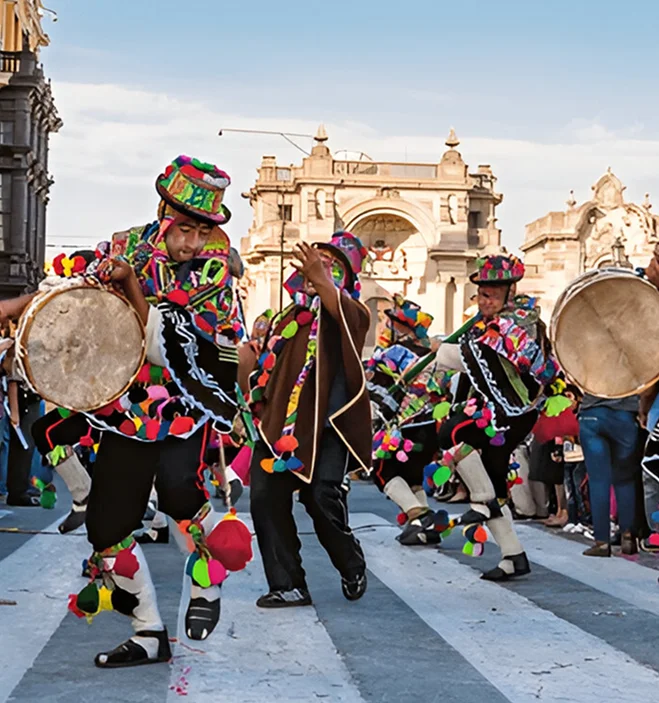
Best Time
So, When Should You Visit Peru?
The best time to visit depends on your travel goals. Here’s a quick guide to help you decide:
Best Time for Hiking & Machu Picchu:
- May – August
(Dry season, ideal for trekking & mountain views) - Clear skies, less rain, but higher crowds & prices
Best Time for Exploring the Amazon:
- June – September
(Less rain, better wildlife visibility) - Easier jungle trekking, fewer mosquitoes, lower humidity
Best Time for a Budget-Friendly Trip:
- November – March
(Low season, fewer crowds, lower prices) - More affordable flights & hotels, fewer tourists, but rain in the mountains
Best Time for Festivals & Cultural Events:
- February – June & September – November
- Experience Peru’s most vibrant celebrations, but book accommodations early!
Travel Seasons
Peru’s Travel Seasons at a Glance
A Quick Guide to Peru’s Travel Seasons for the Perfect Trip
Season
Weather & Conditions
Best For
Downsides
May – August (High Season)
Dry, sunny in mountains; cloudy on the coast
Trekking, Machu Picchu, Amazon wildlife
Higher prices, more
crowds
September – October
(Shoulder Season)
Less crowded,
moderate rain risk
Trekking, cultural
festivals, nature trips
Some remaining snow/
mud in mountains
November – March
(Low Season)
Rainy in Andes & jungle;
sunny on the coast
Budget travelers, fewer
tourists
Rainy, muddy trekking
conditions
March – April (Post Wet
Season Shoulder)
Drying out from
rainy season
Cultural events, fewer
crowds
Possible lingering
mud & snow
Season
Weather & Conditions
Best For
Downsides
May – August (High Season)
Dry, sunny in mountains; cloudy on the coast
Trekking, Machu Picchu, Amazon wildlife
Higher prices, more
crowds
September – October
(Shoulder Season)
Less crowded,
moderate rain risk
Trekking, cultural
festivals, nature trips
Some remaining snow/
mud in mountains
November – March
(Low Season)
Rainy in Andes & jungle;
sunny on the coast
Budget travelers, fewer
tourists
Rainy, muddy trekking
conditions
March – April (Post Wet
Season Shoulder)
Drying out from
rainy season
Cultural events, fewer
crowds
Possible lingering
mud & snow
Peru Awaits
Final Thoughts – The Perfect Time for Your Adventure
There’s no single “best” time to visit Peru—it all depends on your preferences!
- Love adventure & trekking? Visit between May August for clear skies and the best hiking conditions.
- Want to see the Amazon’s wildlife? June–September offers great visibility and fewer bugs.
- Want to experience Peru’s famous festivals? Plan around June (Inti Raymi) or February/March (Carnival).
- Looking for lower prices & fewer crowds? November–March is your best bet
Regardless of when you visit, Peru promises a rich and unforgettable experience, from its ancient Incan ruins to its breathtaking natural landscapes. Start planning your dream trip today!

Plan Your Ultimate Peruvian Adventure
Peru is a country of limitless adventure, cultural experiences, and natural wonders. Whether you’re hiking to ancient ruins, cruising through the Amazon, or relaxing on stunning beaches, there’s something for everyone.
Contact Information
Find Our Contact Details for Quick Assistance and Personalized Travel Support.
Location
Lima, Peru
Get In Touch
* Tell Us About Your San Diego Remodeling Project
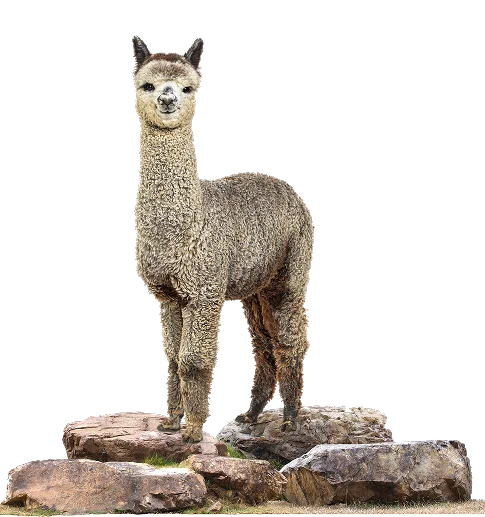
Frequently Asked Questions
Why should I use a Peru travel agent instead of booking on my own?
Booking through a trusted Peru travel agency guarantees:
- Expert knowledge of hidden gems & local experiences
- Exclusive deals on hotels, tours & transport
- 24/7 support before and during your trip
- A stress-free, organized itinerary
Do I need a visa to visit Peru?
Most travelers from the USA, Canada, UK, EU, and Australia do not need a visa for visits up to 90 days. Check with your local Peruvian consulate for details.
What is the best time to visit Peru?
- May – September : Best for trekking & outdoor activities (Dry season)
- October – April : Best for the Amazon & beaches (Rainy season)
What vaccinations do I need for Peru?
- Recommended : Hepatitis A, Typhoid, and Yellow Fever (for Amazon travel)
- Required : COVID-19 vaccine proof may be needed (check latest guidelines)
How do I get to Machu Picchu?
- By Train : From Cusco or Ollantaytambo with PeruRail or Inca Rail
- By Trek : Inca Trail, Salkantay Trek, or Lares Trek (permits required)
- By Bus : Via Hydroelectric Station + short hike
- A stress-free, organized itinerary
Do I need a permit for the Inca Trail?
Yes! The Inca Trail requires a permit, and spots sell out months in advance. Our Peru travel agents can secure your trek permit for you.
Can I visit Machu Picchu in one day?
Yes, you can take a day trip from Cusco, but an overnight stay in Aguas Calientes is recommended for a less rushed experience.
Is Peru safe for travelers?
Yes! Peru is generally safe, but common safety tips include:
- Use official taxis or rideshare apps (Uber, Cabify)
- Avoid flashing valuables in crowded areas
- Be cautious in markets, bus stations & downtown Lima
What is altitude sickness, and how do I prevent it?
Altitude sickness is common in Cusco, Machu Picchu, and Lake Titicaca (above 3,000m).
- Rest & drink lots of water
- Avoid alcohol & heavy meals upon arrival
- Try coca tea or altitude sickness pills
Can I drink tap water in Peru?
No, it’s best to drink bottled or filtered water to avoid stomach issues.
Frequently Asked Questions
Why should I use a Peru travel agent instead of booking on my own?
Booking through a trusted Peru travel agency guarantees:
- Expert knowledge of hidden gems & local experiences
- Exclusive deals on hotels, tours & transport
- 24/7 support before and during your trip
- A stress-free, organized itinerary
Do I need a visa to visit Peru?
Most travelers from the USA, Canada, UK, EU, and Australia do not need a visa for visits up to 90 days. Check with your local Peruvian consulate for details.
What is the best time to visit Peru?
- May – September : Best for trekking & outdoor activities (Dry season)
- October – April : Best for the Amazon & beaches (Rainy season)
What vaccinations do I need for Peru?
- Recommended : Hepatitis A, Typhoid, and Yellow Fever (for Amazon travel)
- Required : COVID-19 vaccine proof may be needed (check latest guidelines)
How do I get to Machu Picchu?
- By Train : From Cusco or Ollantaytambo with PeruRail or Inca Rail
- By Trek : Inca Trail, Salkantay Trek, or Lares Trek (permits required)
- By Bus : Via Hydroelectric Station + short hike
- A stress-free, organized itinerary
Do I need a permit for the Inca Trail?
Yes! The Inca Trail requires a permit, and spots sell out months in advance. Our Peru travel agents can secure your trek permit for you.
Can I visit Machu Picchu in one day?
Yes, you can take a day trip from Cusco, but an overnight stay in Aguas Calientes is recommended for a less rushed experience.
Is Peru safe for travelers?
Yes! Peru is generally safe, but common safety tips include:
- Use official taxis or rideshare apps (Uber, Cabify)
- Avoid flashing valuables in crowded areas
- Be cautious in markets, bus stations & downtown Lima
What is altitude sickness, and how do I prevent it?
Altitude sickness is common in Cusco, Machu Picchu, and Lake Titicaca (above 3,000m).
- Rest & drink lots of water
- Avoid alcohol & heavy meals upon arrival
- Try coca tea or altitude sickness pills
Can I drink tap water in Peru?
No, it’s best to drink bottled or filtered water to avoid stomach issues.
- 12345, Victor Tower, Lima, Peru
- [email protected]
- 1(800) 996-1139